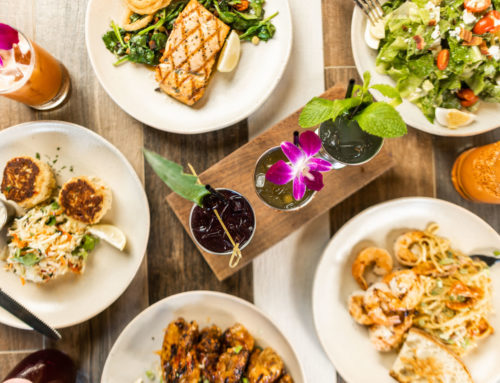The last time that Wright Monning was in Austin, he noticed dozens and dozens of neighborhood barbecue joints, the mom and pop kinds of places that have made Texas famous for smoked brisket.
But when he got back to Dallas, he noticed just the opposite – very few independents, and that development worried him.
“You’ve got some chains going in the suburbs, and that’s about it,” says Monning, who owns Holy Smokes, the well-respected barbecue restaurant at Northwest Highway and Hillcrest, and who grew up in the neighborhood. “There are a lot less mom and pops than there used to be. And that makes me wonder if Dallas isn’t really serious about barbecue. Go to Austin, you can get good barbecue anywhere in any neighborhood. Go to Dallas, it’s not easy to find good barbecue.”
Which, though difficult to believe, may well be true. Think of the names that are gone, whether Bob White or the Ranch House or Two Podners (or, for longtime residents, the Pig Stands that used to dot the neighborhood) … Think of the picnics and cookouts and family gatherings where brisket has been replaced by chicken or turkey. Think of all the meals that used to be barbecue that aren’t anymore.
In fact, reasons abound to explain why barbecue – part of the Holy Trinity of Texas cuisine, along with chicken fried steak and chili – may have fallen on hard times around here. Blame it on changing lifestyles, on those of us who don’t have the time to smoke a piece of meat or the inclination to eat it.
Or blame it on the increasing difficulties of running a neighborhood restaurant in a world dominated by Chili’s and McDonald’s and Pizza Hut. Says 13-year veteran Rob Dilouie, whose family owns Marshall’s Barbecue at Inwood and Forest Lane: “It’s a tough business. There’s a lot of competition out there, and not just from barbecue.”
Still, Dilouie and Monning – along with more than a few others throughout the neighborhood – still believe in the power of the smoke. They may be restaurateurs or caterers, professionals or amateurs, but they still have the same goal – to make the best barbecue they can.
“What you like to see is everyone eat it, and not have any left,” says Philmore “Pete” Peterson, who has been smoking briskets for the firefighters at Station No. 20 in Preston Hollow since he joined the fire department more than 20 years ago. “That’s when you know how much they really liked it.”
TAKING THEIR TIME
Smoking a brisket is not cooking as much as it is patience. Leave it there. And leave it there. And then leave it there for some more. In fact, ask a barbecue master for the secret to their success, and it comes down to time very time. At least 12 hours, and even longer, if possible. Most professionals start the meat in the late afternoon, let it smoke overnight, and don’t really worry about it until the next morning. It’s not unusual, they say, to let a brisket cook for 16 or 18 or even 24 hours.
This, it seems, makes more of a difference than the wood used to smoke the meat. Much has been made over the years about the merits of mesquite vs hickory vs. pecan (or whatever wood seems to be popular at the moment), but what’s more important is controlling the heat so that the brisket is neither under- nor over-cooked. If there is a rule of thumb for these things, it’s an hour a pound at somewhere around 200 degrees (hence 12 to 15 hours for a 12- to 15-pound brisket, a typical restaurant cut). There is also a fair amount of food science involved, dealing with effect of heat on proteins and the boiling point of water.
But, as any barbecue master will point out, this is as much art as science, and any guideline is just a place to start. Says Dilouie: “You have to find that sweet spot by trial and error, where the smoke is right and the meat is tender. So you have to plan on maybe undercooking one or overcooking one until you get it right.”
In this, brisket is probably the most difficult piece of barbecue to perfect. In the long and quarrelsome (and, by now, a bit tiresome) debate about which makes the best barbecue, something that is usually overlooked is that Memphis-style or Carolina-style barbecue starts with a significant advantage. It’s pork ribs or pork shoulder, and neither represents the challenges of the brisket. Ribs have bones, which add flavor to the meat.
Georgia author Joe Dabney, who knows as much about pork barbecue as anyone has a right to know, notes that every great pork pit master he has ever talked to cites that fat as one key to success, since it keeps the pork moist throughout the long cooking process. A brisket, on the other hand, is a tough, leaner piece of beef that, as Julia Child once put it, “is never tender like steak, but should be pleasantly chewable and have a real beefy flavor.” So anyone who can produce a smoked brisket that doesn’t taste like a man’s belt that has been sprayed with hickory room freshener has truly accomplished something.
And, in our neighborhood, they’re doing that. The numbers are amazing – 3,500 pounds a week at one restaurant, 3,000 pounds at another, 2,100 pounds at a third. And that doesn’t include the smoked turkey and the smoked pork and the ribs and the sausage. Even caterers, who don’t smoke every day, can do 200 to 400 pounds of brisket during a busy month.
“There’s just this great tradition for brisket in Texas,” says Dilouie. “And I do think it’s a great meat for barbecue. You have the fatty part and you have the lean part. There’s something for everybody.”






